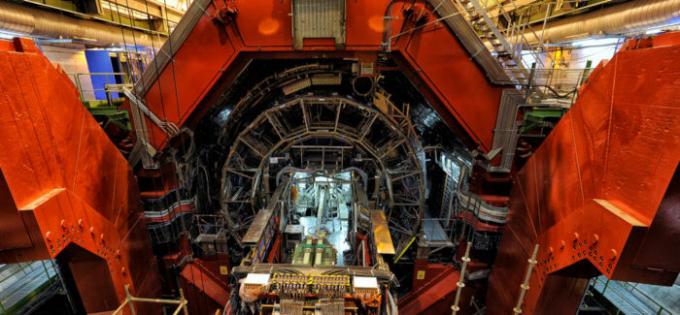O niobium was discovered by the english chemist CharlesHatchett in 1801, from mineral studies columbite. He named the new found element columbium (Cb). Later, in 1846, independently, the German chemist HenrichRose discovered the element and named it niobium, name adopted by the international community since 1950.
niobium is a metalbrillant, extracted mainly from the mineral columbite, and considered of lowtoughness. In the course of the text, we will talk a little more about its chemical and physical properties.
What is it for?
Among its commercial uses, we can mention the use in devicesdoctors, like the pacemaker, because its metallic alloys are physiologically inert and with featureshypoallergenic. For this reason, it is also used in manufacturinginjewelry.
Niobium is also used in the production of threadsinmagnetssuperconductors employed in the machines of resonancemagnetic and even us acceleratorsinparticles.

Large Hadron Collider: uses more than 800 tons of superconducting Niobium wires.
Know more: Know the names of the new chemical elements!
Where is it found?
the niobium is not found freely in nature, but in ores such as columbite and tantalite. In these minerals, niobium is in the form of isotopestable93Nb, however, it is estimated that there are at least 28 radioisotopes already synthesized, with mass numbers ranging from 83 to 110 u.
Niobium in Brazil
O Brazil has the mostofniobium available on the planet (about 94%) and it is also responsible for much of the commercialization of that metal. Due to the lack of proven use of this element, in 1965, the government allowed the Brazilian Metallurgy and Mining Company (CBMM), in partnership with the American government, explored the niobium reserves found in Brazilian soil. In the following years, CBMM bought the part that belonged to the Americans and became the global controller of niobium sales.
It is worth mentioning that the fact that it has almost all of the available niobium reserve nobringbig onesprofitability for the Brazilian government, as it is sold at low cost when compared to other metals, such as the gold, which sells for nearly double the market value of niobium.
Not to mention that he is a metalreplaceable, that is, metals other than niobium can be used in the alloys. Another point that hinders the commercialization of niobium is the fact that we sell the matter-cousin and we don't add value to the extracted metal, so we export the niobium and buy the ready-made materials made from the metal.
Features
- propertieschemical: and the chemical element of atomic number 41 and atomic mass 92.9 u. Its symbol is Nb. It belongs to the 5th period of the table and to group 5 and is therefore considered a transition metal in the periodic classification of chemical elements. Its chemical properties are similar to the properties of tantalum (Ta), located in the same group just below niobium.
- propertiesphysical: it is a shiny, gray metal and, under normal conditions, it is solid (melting temperature: 2477 °Ç; boiling temperature: 4744 °Ç). It is ductile and has superconducting properties, in addition to being corrosion resistant.
Also access: Read about the other transition metals on the periodic table
Curiosities
- Initially, niobium was used as filaments in incandescent lamps, but it was quickly replaced by tungsten (W) as it is a metal with a higher melting point.
- Brazil has more than 90% of the world's reserves of this metal.
- The largest reserve of niobium is in the city of Araxá-MG.
- In 2012, the average price of the ferro-niobium alloy was US$ 26.5 per kilogram.
- The world market demand for niobium is 100,000 tons per year, to which Brazil contributes 90% of this total.
- About 100 g of this metal is capable of making a 1 ton iron alloy extremely resistant.
By Victor Felix
Graduated in Chemistry
